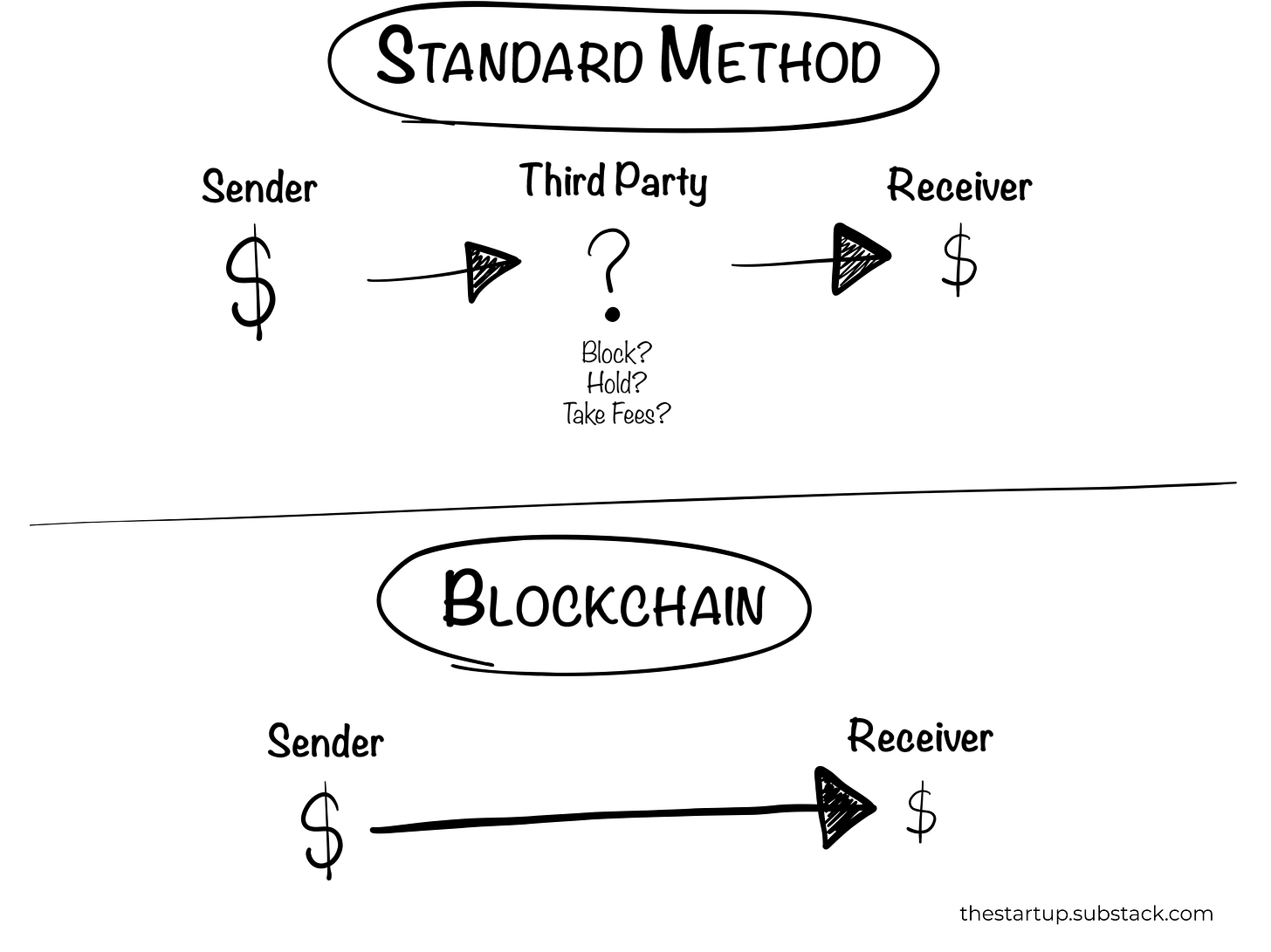"Learning and innovation go hand in hand. The arrogance of success is to think that what you did yesterday will be sufficient for tomorrow.”
— William Pollard
What Got Me Thinking 💭
📚 Andreas M. Antonopoulos & Gavin Wood | Mastering Ethereum
📺 Vance Spencer, Santiago Santos & Spencer Noon | The Current State Of DeFi
📝 Olga Kharif | Cryptocurrency Venture Fund Launches to Focus on Black Startups
It’s hard to appreciate innovation before mass adoption because it’s “not normal”. By nature, the more disruptive the technology, the more resistance it receives. Retrospectively, it always seems inevitable. Prospectively, we have to reject our understanding of “normal”.
Arguably, blockchain technology’s disruption will be comparable to the rise of the internet. It’s forcefully changing our “ordinary” — though it’s not without resistance. Since 2017, I’ve witnessed the growth, maturing and evolution of space. We can’t even begin to quantify the number of potential use cases.
Many people have heard about Bitcoin, Coinbase, Binance, Etheruem, etc. However, few know what they are and how they work. Several people asked to write/speak on this topic. I’ll never capture everything, but consider this an introduction to a series of posts. Here, I’ll explain the high-level properties of the technology that make it so compelling.
Distributed Ledger Technology (DLT)
Fundamentally, it maintains an encrypted, unchangeable record of transactions across a vast network of nodes (i.e. computers). Every node retains a complete history of transactions, improving security and making bad behaviour difficult and expensive. DLT goes further than “cloud” computing because it distributes ownership in addition to computing power and storage. Anybody can operate a node, becoming an integral member of the network. The concept may not seem like much at first, but it underpins the remaining properties.
Digital Scarcity
Thanks to DLT, we can digitally create and manage currencies without a corresponding physical item. For the first time, we can create digital assets that are reliably limited in quantity.
The applications of this technology extend further than “currencies”. You can create utility tokens (like stocks with a business use-case), digital collectables, ID anonymity, ticketing systems, distributed cloud networks, financial instruments, etc. (We'll delve into some of this in future.)
Censorship Resistant
Blockchain networks enable peer-to-peer transactions. Third parties are not required to facilitate transactions, unlike bank transfers. You retain full custodianship of your assets whilst being able to pay people directly. Why is this important?
When sending money via third parties (e.g. banks, western union, etc.), it may be blocked, delayed or have hefty fees applied. Intermediaries can occasionally be helpful (e.g. fraud prevention) — but not always. During the recent END SARS campaign, the Nigerian government prevented international support via blocked transactions. International supporters circumvented the government and funded the campaign with Bitcoin.
Immutable Smart Contracts
A significant milestone in the life of DLT was the introduction of smart contracts. These are public, immutable blocks of code on the network. Smart contracts give blockchain developers new superpowers. Previously, developers sent information via code. Now, they can send value. Making value transfer programmable opens up a world of opportunities. One area this has immediate implications on is finance.
The code being “on-chain” makes it’s publicly accessible and immutable. Aside from some public parameters, nobody can change the code in the future. The public can audit the code and possesses the agency to enter or leave ecosystems. Open, permanent code will redefine how we view security, transparency, and companies altogether.
Final Thoughts
Every investor loves the idea of a “Total Addressable Market” (TAM). However, we learn from the introduction of the wheel, electricity, the sowing machine, and the internet that some markets sizes can never really be quantified. Blockchain technology is a type of market-creating innovation that falls in this category.
I look forward to exploring this with you in the coming posts!
If you liked this content, let us know with a like, share and subscribe. 🙏🏾
Personal Note 📝
I know I’ve taken a few months away, but thanks for the continued shares, and welcome to the new subscribers! A special thanks to everyone who reached out and encouraged me to start writing again. I’ll try and re-develop some level of consistency!
And to summarise where I’ve been — diving deeper into this space!
For now, all I can say is it’s time to build!
Yes - I’m The Plug 🔌
For a relatively thorough breakdown of crypto, here’s a helpful thread of reads and coding resources:


Do You See What I See? 🗞👀
Venture Capital is driven by power laws, as outliers provide overwhelming returns. Andreessen Horowitz's General Partner Chris Dixon referred to this phenomenon in his article about the Babe Ruth Effect. He argues that the best VCs “swing hard, and either hit big or miss big…” because you “…can't have grand slams without a lot of strikeouts.”
Andreessen Horowitz's just launched Crypto Fund III — the largest dedicated crypto fund ever ($2.2 Billion). They’re going out swinging.
He started with $1800 on January 31st and had made $3.5m by May 11th. How did he do it? He invested in every single dog coin he liked. “Don’t hate the player, hate the game”. Well, I hate this game. 🥲
Most people view the widespread adoption of blockchain technology purely from a western vantage point. However, we see aggressive adoption rates throughout Africa, South America and Asia. Cryptocurrency is a lifeline, not an optional extra for those struggling with intense currency depreciation or without robust financial infrastructure. Blockchain’s early adoption may present long-term advantages for under-developed economies.
🐦 Twitter | 🔗 LinkedIn | 👨💻 Indie Hackers | 🕵️♂️ Product Hunt | 📥 Personal Site







